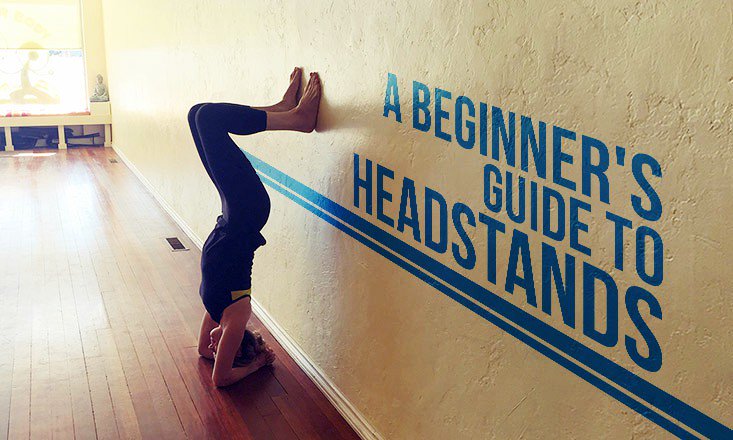I remember taking my very first yoga class back in the early 90’s and falling in love with headstand. I felt like the pose was meant for me; and I somehow had the courage to try it right away.
Not everyone’s the same though. Regular movement and a consistent yoga practice will help build strength and confidence. If you’re looking to improve your inversions, why not unlock your full potential and sign-up to our free 30-day Yoga Challenge by clicking here. It’s one of the best ways to get moving and practice going upside down!
Headstand is the king of yoga poses; and it is great for increasing blood flow to the brain, building strength in the arms, shoulders and core muscles, and it helps with energy, stamina and even hair loss!
The Fear of Inversions
Not all beginners feel the same way as I did about going upside down for the first time.
Some of my students tell me they are afraid of being inverted, feel too weak to balance on their head or just aren’t sure of how to practice headstand properly without hurting themselves.
So I put together this quick beginner’s guide to headstands because I want to share with you a great way to start working on this awesome inversion so you can master this pose and feel like a king!
Building Upper Body and Core Strength
First thing to work on is building strength in the upper body and core. My favorite prep for headstand and many arm balances for the matter is dolphin.
To practice dolphin, come on to all fours and place your forearms on the mat, interlacing your palms. Tuck your toes under and lift your lower body to come in to forearm dog. On an inhalation, come out towards forearm plank and imagine touching your chin to the floor in front of your fists.
On an exhalation, move back to forearm down dog. Repeat 8-10 times and practice this daily for 3 to 4 weeks.
Learning Proper Hand Placement
One of the mistakes I see a lot of students make in headstand, is keeping their palms open and letting their head rest in their hands. You should imagine you’re holding a tennis ball between your palms and place the crown of your head at the base of your palms right at the wrist crease.

When you do this, engage your scapula and press the tops of your shoulders down away from your ears as you engage your rear deltoids (shoulder blades).
This is how your shoulder girdle should feel when you’re upside down. The majority of your weight should be on your forearms and not on your head.
Using the Wall for Support
Next, come back to all fours and place your forearms on the mat. Place your head in the right position and tuck your toes under to lift your lower body. Have your arms and head about 5 inches from a wall and start to walk your feet in as close as you can so your hips come over your shoulders.
You will almost feel like you’re going to topple forward but you won’t, as long as you’re pressing firmly in to your forearms and outer wrists and engaging your core.
From this position, slowly work on lifting your knees up in to your armpits and letting your lower back come to the wall. Press firmly in to your elbows and start to walk the legs up the wall until they are straight.
To come out of the pose, slowly bring your knees back in to your chest and lower the feet to the floor. Rest in child’s pose to recover.
As you feel ready to, take your legs off of the wall and try to find your midline as you balance in headstand. You want to use your legs actively and lift them up to the ceiling as you keep engaging your core muscles.
Once you feel strong enough at the wall, work on practicing headstand in the center of the room but only if you are ready. You can always ask a friend or teacher to spot you, and you can also somersault out of the pose if you go too far. Try not to kick up into headstand, but control the ascent—this will make you stronger in your abs and prevent you from injury.
Feel free to ask me any questions as you work on this inversion and good luck!





